Sound Objects
Introducing my box of found objects and materials collected from the recycling and from nature.
I’ve been collecting “sound objects” for a while now. I have a couple of large boxes full of found objects and materials that I can use as “instruments”.
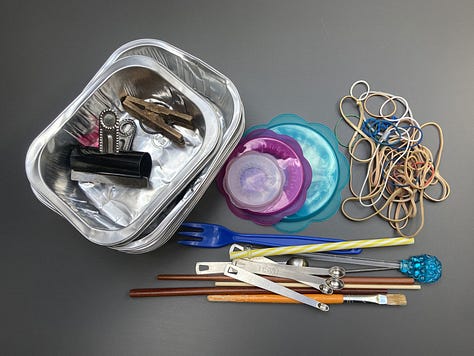
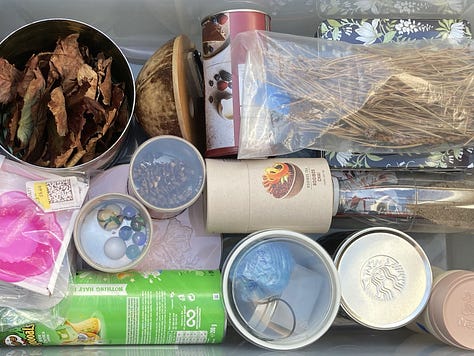

It all started a number of years ago with the recycling! In Sheffield we have a blue bin (paper and card) and a brown bin (jars, bottles, tins, foil trays etc.) which are collected monthly. I try to use these to recycle as much packaging as I can.
Whether or not this kind of recycling makes that much of a difference is a complex question, but the process of recycling has given me a new appreciation of these objects and materials that we usually just throw away.
A foil tray from a ready meal is made of aluminium. The ore has been mined, usually in extreme conditions, the metal has been extracted using an industrial process involving all sorts of other chemicals and machinery. And finally a thin foil tray has been created using even more accumulated knowledge, energy and machinery just to provide a tray for your oven tea!
This much aluminium would have been precious only a couple of hundred years ago so it is very sad how little respect is given to it today.
And then there is all the plastic we use and discard. The plastic that has led to the current sorry state we are in with ocean pollution.
So I decided to try and do something a little more creative than just throw all these materials away and I began to explore the possibilities of collecting and using the recycling objects as sound sources, as instruments. Foil trays, jars, bottles, plastic containers, cardboard and paper can be quite useful for making sounds!

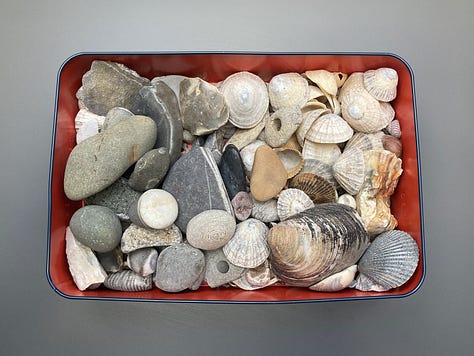
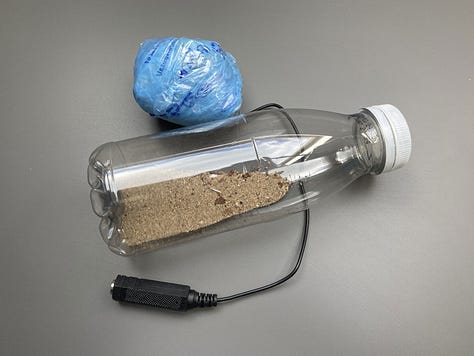
I have worked with similar materials before, particularly in sculpture—unwanted materials, whatever I could get my hands on—books, newspaper, waste wood or broken electrical equipment.
So I now have quite a good collection of the best of these materials, for use as drums, for bowing, or as containers or shakers for other materials. And along the way I’ve also started to collect natural objects—pine cones and needles, sand, shells, rocks and driftwood.
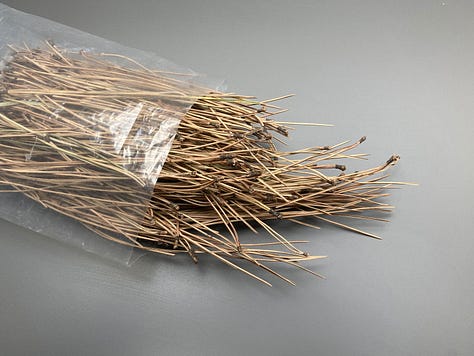
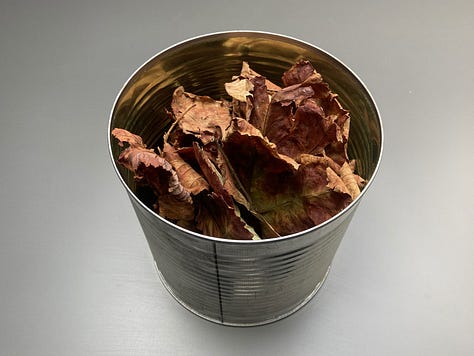
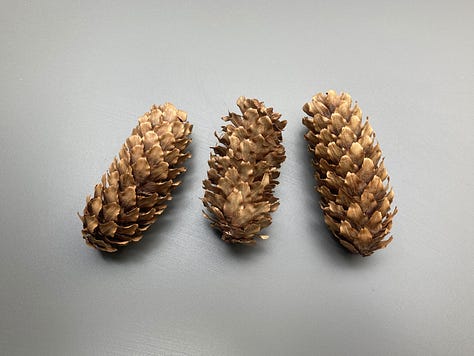
I’ve tried a number of different ways of working with these objects over the last few years. I’ve attempted to build sample libraries a couple of times and also recorded longer “performance” based pieces as well.
Most of these attempts have had limited success, but occasionally this work has made it out into the world like with my recent video using sound objects with the SOMA COSMOS:
Of course, many musicians and artists have used a broad range of found objects over the years to make sound for performance and installation, here are just a few of my current favourite artists working in this area:
Zimoun — “Using simple and functional components, Zimoun builds architecturally-minded platforms of sound. Exploring mechanical rhythm and flow in prepared systems, his installations incorporate commonplace industrial objects.”
Rie Nakajima — “Rie Nakajima is a sculptor living in London. She creates sounds using [a] combination of motorised devices and daily objects. It can be installation or performance. Fusing sculpture and sound, her artistic practice is open to chance and the influence of others.”
Rubbish Music — “We use sound to investigate the journeys, transformations and impacts of our discarded objects. Using our worn out treasures, empty vessels and broken devices as an orchestra of vivid musique concrète materials we examine the worlds we make and destroy via our rubbish.”
Cheryl E. Leonard — “Cheryl Leonard is a San Francisco-based composer, performer, field recordist, and instrument builder whose works investigate sounds, structures, and objects from the natural world. Her projects cultivate stones, wood, water, ice, sand, shells, feathers, and bones as musical instruments, and often feature one-of-a-kind sculptural instruments and field recordings from remote locales.”
Gwen Sion — “Gwen Sion is an experimental composer, music producer and multidisciplinary artist working with sound, sculpture, DIY electronics, video and installation. She creates multi-instrumental, vocal and electronic compositions, and designs and builds her own handmade electronic instruments and experimental sound devices by recycling found objects and natural materials.”
And a quick shout out to Ehmo who often shares images of his sound objects.
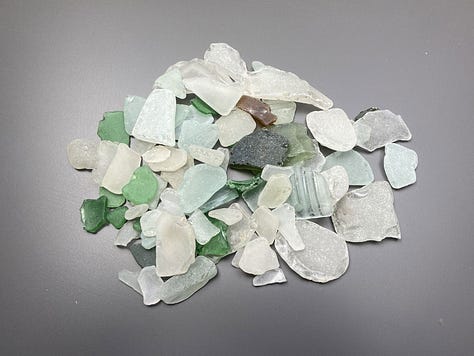
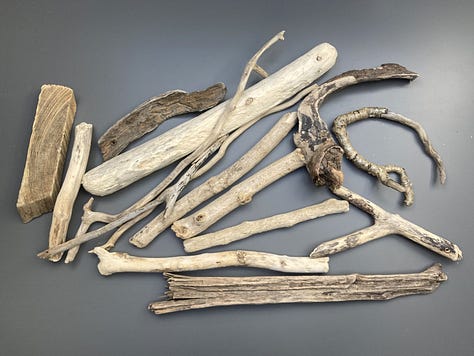
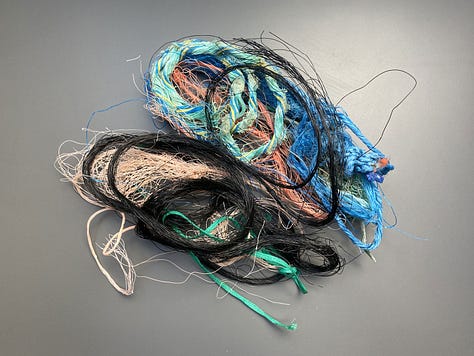
Incidentally, the term “sound object” has been used a few times before, most notably by the French composer Pierre Schaeffer who also coined the term “musique concrète”.
Schaeffer believed that a “sound object” (l'objet sonore) should be free from its sonic origin so that a listener could not identify it, what he termed as acousmatic listening.
Of course was way before digital sampling technologies allowed us to record and manipulate sound in any way we can conceive.
So my use of “sound object” is very different from Pierre Schaeffer’s—an object that makes sound, not a piece of sound that can be treated like an object!
So while I have “dabbled” in this kind of work on and off for a while now I’d like to step it up a bit, really dig in to the sonic possibilities. And I’ve also been collecting a number of motors so that I can start experimenting with kinetic instruments too. So stay tuned!
If I’ve left out any artists or musicians who work in a similar way then drop a note in the comments. 🙏



Love the results from the IKEA drums! Sounds slightly unhinged but really cool!